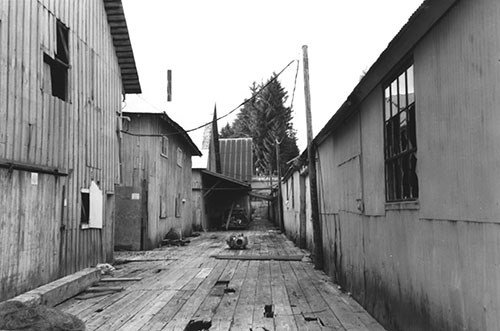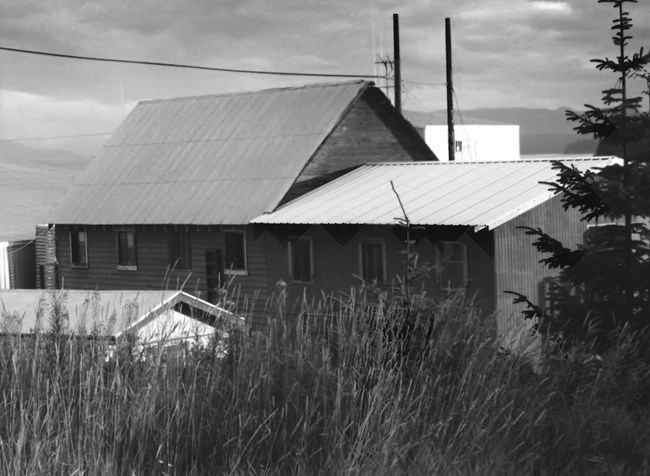Part of a series of articles titled Canneries of Alaska.
Previous: Diamond NN Cannery: A Case Study
Next: Bartlett Cove Canneries
Article

NPS / Linda Cook, 1992
The Kake Cannery historically consisted of 22 buildings and structures that were constructed between 1912 and 1940. The industrial-style infrastructure and layout of the site directly responded to its utilitarian purpose as a cannery.
Typical of a cannery site, the campus housed employees in segregated bunkhouses (Alaska Native, Euro-American, Oriental, Filipino, and African American), and single-family homes were assigned to individuals in certain positions. Because of the location of the cannery, the primary circulation pattern was by a boardwalk that connected the mess hall, bunkhouses, and cannery buildings.
The Kake Cannery was constructed in 1912 by the Sanborn Cutting Company at an existing cure station and dock owned by the Kake Trading and Packing Company. In 1917, the cannery produced 89,369 cases of salmon. The Sanborn Cutting Company operated the cannery until 1925, when it was sold to the Sunny Point Packing Company. In 1926, the canneries pack was 93,480 cases. The Kake Cannery changed ownership for the last time in 1929 to Alaska Pacific Salmon Corporation, and produced 82,040 cases that year. The highest pack made by the Kake Cannery was 112,445 cases in 1940. The cannery was in operation until 1977, when it was closed permanently due to economic reasons.
| Year | Event | Owner | Production (cases) |
|---|---|---|---|
| 1912 | Construction of cannery | Sanborn Cutting Company | - |
| 1917 | - | Sanborn Cutting Company | 89,369 |
| 1926 | - | Sunny Point Packing Company (1925) | 93,480 |
| 1929 | - | Alaska Pacific Salmon Corporation | 82,040 |
| 1940 | Highest pack by the Kake Cannery | Alaska Pacific Salmon Corporation | 112,445 |
| 1977 | Closed permanently | Alaska Pacific Salmon Corporation | - |

NPS / Linda Cook, 1992
Initially, the Kake Cannery employed native workers, and entire families would work at the cannery. Native fishermen were the primary salmon suppliers to the cannery, and women and children worked on the canning lines. However, by the 1930s, the native workforce had decreased considerably to two to four fisherman and a handful of women in the cannery. Like the other canneries, the workforce eventually switched to contracted labor, first employing workers from China, then Japan, and finally the Philippines.
Part of a series of articles titled Canneries of Alaska.
Previous: Diamond NN Cannery: A Case Study
Next: Bartlett Cove Canneries
Last updated: November 5, 2019